
The GameCube is a home video game console developed and marketed by Nintendo. It was released in Japan on September 14, 2001, in North America on November 18, 2001, in Europe on May 3, 2002, and in Australia on May 17, 2002. It is the successor to the Nintendo 64 (N64) and the predecessor to the Wii. As a sixth-generation console, the GameCube primarily competed with the PlayStation 2 and the original Xbox.

Shigeru Miyamoto is a Japanese video game designer, producer and game director at Nintendo, where he serves as one of its representative directors as an executive since 2002. Widely regarded as one of the most accomplished and influential designers in video games, he is the creator of some of the most acclaimed and best-selling game franchises of all time, including Mario,The Legend of Zelda, Donkey Kong, Star Fox and Pikmin. More than 1 billion copies of games featuring franchises created by Miyamoto have been sold.

Metroid Prime is a 2002 action-adventure game developed by Retro Studios and published by Nintendo for the GameCube. Metroid Prime is the fifth main Metroid game and the first to use 3D computer graphics and a first-person perspective. It was released in North America in November 2002, and in Japan and Europe the following year. Along with the Game Boy Advance game Metroid Fusion, Prime marked the return of the Metroid series after an eight-year hiatus following Super Metroid (1994).
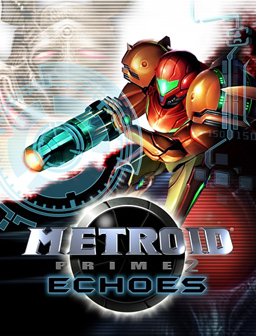
Metroid Prime 2: Echoes is a 2004 action-adventure game developed by Retro Studios and published by Nintendo for the GameCube. The sequel to Metroid Prime (2002) and the first Metroid game with a multiplayer feature, Echoes was released in North America, Europe and Australia in 2004 and in Japan under the name Metroid Prime 2: Dark Echoes in May 2005.

Pikmin 2 is a 2004 real-time strategy puzzle video game developed and published by Nintendo for the GameCube. It is the direct sequel to the 2001 game Pikmin and the second game in the Pikmin series. In the game, Olimar returns to the Pikmin planet to collect valuable treasure after learning that the company he works for—Hocotate Freight—is on the verge of bankruptcy.

Mario Power Tennis is a sports game developed by Camelot Software Planning and published by Nintendo. The game is the sequel to the Nintendo 64 title Mario Tennis, and is the fourth game in the Mario Tennis series. Power Tennis was released for the GameCube in Japan and North America in late 2004, and in PAL regions in early 2005. The game was ported for the Wii in 2009 as part of the New Play Control! series, and was also re-released as a Nintendo Selects title in 2012. A companion handheld game, Mario Tennis: Power Tour, was also released on Game Boy Advance around the same time as the original GameCube release, bearing the same title as Power Tennis in Europe.
Pikmin is a real-time strategy and puzzle video game series created by Shigeru Miyamoto, and published by Nintendo. The games focus on directing a horde of plant-like creatures called Pikmin to collect items by destroying obstacles, avoiding hazards, and fighting fauna that are hazardous to both the player character and the Pikmin.
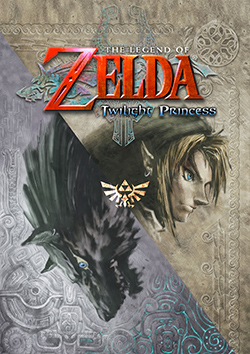
The Legend of Zelda: Twilight Princess is a 2006 action-adventure game developed and published by Nintendo for the GameCube and Wii. Originally planned for release exclusively on the GameCube in November 2005, Twilight Princess was delayed by Nintendo to allow its developers to refine the game, add more content, and port it to the Wii. The Wii version was a launch game in North America in November 2006, and in Japan, Europe, and Australia the following month. The GameCube version was released in December 2006 as the final first-party game for the console.

Metroid Prime 3: Corruption is a 2007 action-adventure game developed by Retro Studios and published by Nintendo for the Wii. The seventh main game in the Metroid series, it was released in North America and Europe in 2007 and in Japan the following year.

Chibi-Robo! Plug Into Adventure! is a platform-adventure video game developed by Skip Ltd. and published by Nintendo for the GameCube console. It was released in Japan in 2005, and in North America and Europe the following year. Originally conceived as a point-and-click adventure game, it was put on developmental hold until Nintendo producer Shigeru Miyamoto gained interest in the title and overhauled its production.

Cars is a 2006 adventure racing game published by THQ. The game is based on the 2006 film of the same name. It was released for the PlayStation 2, GameCube, Xbox, Microsoft Windows, Game Boy Advance, Nintendo DS, and PlayStation Portable in June 2006, with versions for the Xbox 360 and Wii released later that year. The Wii version includes functionality geared towards its Wii Remote controller and was a launch game for the system. Taking place after the events of the film, the game follows Lightning McQueen as he participates in the new racing season with his goal set on finally winning the Piston Cup. While doing so, he races and trains with the local community of Radiator Springs.

Bionicle Heroes is a 2006 video game published by Eidos Interactive and TT Games Publishing and based on Lego's Bionicle line of constructible action figures. The game was released in November 2006 on PlayStation 2, Xbox 360, GameCube, Microsoft Windows, Game Boy Advance, and Nintendo DS; a Nintendo Wii version was later released in April 2007. The home console and PC versions were developed by Traveller's Tales, while Amaze Entertainment developed the handheld versions. A version of the game for mobile phones, developed by Universomo, was also released. The home console and PC versions of the game are third-person shooters, while the Game Boy Advance version is a run 'n' gun shoot 'em up and the Nintendo DS version is a first-person shooter. The story of Bionicle Heroes, where the player seeks to liberate the island of Voya Nui and its inhabitants from the villainous Piraka, is not canon to the official Bionicle story.
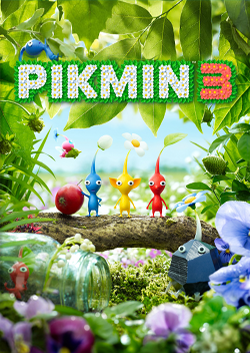
Pikmin 3 is a 2013 real-time strategy and puzzle video game developed and published by Nintendo for the Wii U video game console. It is the sequel to the GameCube games Pikmin (2001) and Pikmin 2 (2004), and was released in Japan on July 13, 2013, and in all other regions the next month. Shigeru Miyamoto announced Pikmin 3 on July 16, 2008, for the Wii console, later stating at E3 2011 that it had transitioned to the Wii U.

Spore Creatures is a 2008 science fiction adventure game developed by Griptonite Games and published by Electronic Arts. The game is a spin-off of Spore in which a player controls and evolves a creature of their creation to save another creature from the clutches of an alien who plans on dominating the galaxy.

New Play Control! is a series of first-party GameCube games ported to the Wii by Nintendo. Games in the New Play Control! series feature enhancements such as widescreen support, enhanced graphics and the implementation of the Wii's motion controls with the Wii Remote and Nunchuk.
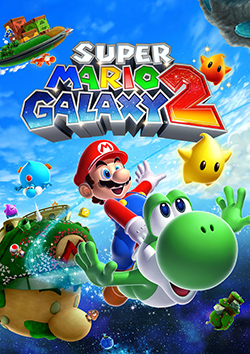
Super Mario Galaxy 2 is a 2010 platform game developed and published by Nintendo for the Wii. It was first announced at E3 2009 and is the sequel to 2007's Super Mario Galaxy. It was released worldwide in 2010. Much like the first game, the story follows Mario as he pursues the Koopa King, Bowser, into outer space, where he has imprisoned Princess Peach and taken control of the universe using Power Stars and Grand Stars. Mario must travel across various galaxies to recover the Power Stars in order to travel to the center of the universe and rescue Princess Peach.

Kirby's Return to Dream Land is a 2011 platform video game developed by HAL Laboratory and published by Nintendo for the Wii. It is the ninth mainline installment and the twenty-second game in the Kirby series. The game's plot follows Kirby, King Dedede, Meta Knight, and Bandana Waddle Dee as they help an alien named Magolor recover the pieces of the Lor Starcutter so he can return home. While Kirby's Epic Yarn was released in 2010, Kirby's Return to Dream Land is the first traditional Kirby platforming home console game since Kirby 64: The Crystal Shards, which was released in 2000 for the Nintendo 64. The title was released in North America on October 24, 2011, in Japan on October 27, 2011, in Europe on November 25, 2011, and in Australia on December 1, 2011.

Nintendo Land is a party video game developed and published by Nintendo as a pack-in launch title for the Wii U home video game console in 2012. The game was first announced at E3 2012 during Nintendo's press conference.

Pikmin 4 is a 2023 real-time strategy video game co-developed by Nintendo EPD and Eighting, and published by Nintendo. It is the fourth main installment of the Pikmin series, following Pikmin 3 (2013), and the sixth installment overall. It was released on the Nintendo Switch on July 21, 2023.
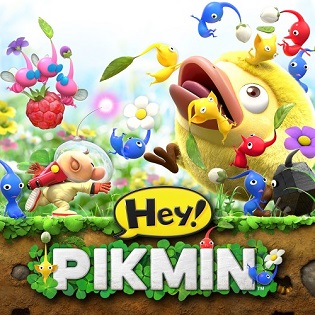
Hey! Pikmin is an action game in the Pikmin series developed by Arzest and published by Nintendo for the Nintendo 3DS handheld video game console. It is a standalone sequel to Pikmin 3 and is the series' first installment on a handheld console. Hey! Pikmin was released worldwide in July 2017, coinciding with the release of the New Nintendo 2DS XL – the fifth and final hardware revision of the 3DS. It received generally mixed reviews from critics, with criticism focusing on its simplicity and lack of depth compared to the mainline console games.



















